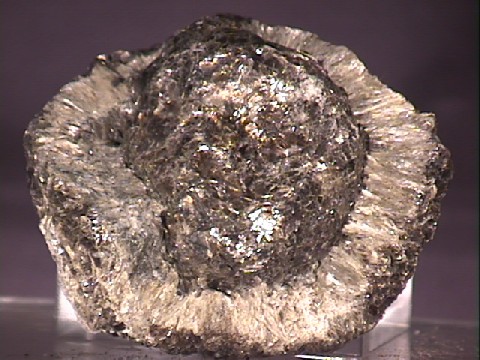 The Mineral ANTHOPHYLLITE
The Mineral ANTHOPHYLLITE
- Chemistry: (Mg, Fe)7Si8O22(OH)2 , Magnesium Iron Silicate Hydroxide.
- Class: Silicates
- Subclass: Inosilicates
- Group: Amphibole
- Uses: Are limited to some asbestos uses and as mineral specimens.
Specimens
Anthophyllite is metamorphic and is found in gneisses and schists derived from magnesium rich igneous or dolomitic sedimentary rocks. It also forms from the retrograde metamorphism of other metamorphic minerals and from the metasomatic alteration of olivine and other ultramafic minerals when these minerals are subjected to pressure in the presence of water. Under different conditions (such as more water), serpentine would be the mineral produced from the alteration of olivine.
Like serpentine, some forms of anthophyllite are asbestos-form and can be used as asbestos. Asbestos has many industrial uses despite some health risks and is made of different minerals all with a fibrous habit. Serpentine and tremolite asbestos are considered the better varieties due to their greater flexibility and tensile strength, but anthophyllite asbestos has its uses such as in refractory cements.
Although individual well formed crystals of anthophyllite are very rare, some aggregate specimens of anthophyllite are striking and can make nice collection pieces. One variety found at Butte, Montana even displays a nice blue schiller effect.
PHYSICAL CHARACTERISTICS:
- Color is usually various shades of brown such as yellow-brown, green-brown or brownish-gray, but also green, off-white or gray.
- Luster is vitreous to dull or silky in fibrous forms.
- Transparency: Crystals are translucent to opaque.
- Crystal System is orthorhombic; 2/m 2/m 2/m.
- Crystal Habits include prismatic often aggregated crystals and fibrous, asbestos-like masses.
- Cleavage: is good in two directions at 56 and 124 degree angles forming wedge shapes fragments.
- Fracture is easy and splintery.
- Hardness is 5.5 - 6.
- Specific Gravity is approximately 2.9 - 3.4 (average to slightly above average).
- Streak is gray.
- Other Characteristics: Weakly pleochroic and a blue schiller effect is seen in some specimens from Butte, Montana.
- Associated Minerals are talc, cordierite and phlogopite.
- Notable Occurrences include Butte, Montana; Delaware County, Pennsylvania; California; Arizona and Franklin County, North Carolina, USA; Ontario, Canada; Greenland; Kongsburg, Norway and Italy.
- Best Field Indicators are crystal habit, fracture, cleavage, color, streak and hardness.


